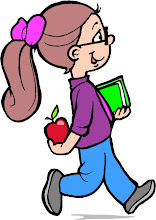- Literal
- Interpretive
- Critical
- Appreciative
What exactly do these labels mean? Here is information that will help you understand and be able to use these four levels of comprehension with your children.
Literal Level: Facts that are EXPLICITLY stated in the text; this information can be found 100% in the text of the story or article.
Things to ask questions about:
- A character
- Name
- Traits
- Feelings
- The story setting
- When the story took place
- Picture Reading
- What is happening?
- What do they see?
- A single action or event
- What was the action or event?
- How did it happen?
- What happened?
- List or Sequence
- What items?
- What actions?
- What events?
- What order? (First, Next, Last)
- Comparisons
- Likenesses or differences between
- Characters
- Events
- Places
- Cause and Effect Relationships
- Reasons for certain actions or events
- Results of certain actions or events
- Main Idea
- Idea, theme, or moral of a paragraph or story
- Ask your child to suggest additional details not explicitly stated in the text about
- A character
- The setting of the story
- When the story took place
- Ask them to infer or predict additional details about a single action or event
- Infer what might have occurred previously
- Predict what could happen next
- Predict final outcome of the story
- Ask your child to infer things about a picture in the story.
- What meal does it look like they are having?
- Ask them to infer or predict a list of items, actions, events, or the sequence of several actions or events not stated in the text.
- Ask your child to infer likenesses or differences among characters, events, or places
- Ask child to infer the reasons for certain actions or events
- Ask child to infer the results of certain actions or events
- Ask them to come up with the main idea, theme, or moral that is not stated in the text
- Have your child summarize the story in their own words
- Ask your child to state and support their opinion about:
- Character’s traits, feelings, motives, or actions in the
- An event in the story
- If they were that character, what would they do and why?
- A sequence of events
- What is happening in a picture in the story
- Overall plot or theme of the story
- The likenesses and differences between two stories
- Characters, actions, events
- Whether the characters, actions, or events could have really happened (realistic or fanciful fiction)
- What does your child think of the author’s:
- Use of language
- Values
- Imagery
- Style of text
- What is your child’s reaction to the author’s:
- Ideas
- Language
- Purpose
I gathered this information from
- Bob Jones Curriculum









